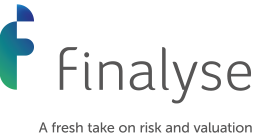By Vera Jotanovic, Consultant
and Kristian Lajkep, Regulatory Compliance Officer
Introduction
The contemporary advances in machine learning (ML) may have a profound influence on the risk management procedures, as these methods enable the analysis of very large amounts of data while contributing to an in-depth predictive analysis, and can improve analytical capabilities across risk management and compliance areas. Any market participant whose key activities involve digitalization and application of ML estimation techniques can benefit from:
- greater transparency of risk profiles,
- more targeted risk-based pricing whilst reducing the scope for judgment-based errors,
- faster client service enabled by quick processing of risk profiles and
- more effective management of existing portfolios.
Machine learning may become particularly indispensable in risk management. For instance, as regards the credit risk management, the automation of credit processes and the digitalization of the key steps in the credit value chain are likely to yield significant cost savings. In addition, credit risk costs can be further reduced through integrating new data sources and applying advanced-analytics techniques. These improvements generate richer insights for better risk decisions and ensure more effective and forward-looking credit risk monitoring. A particular contribution, already put into practice, is the use of ML methods for the estimations of crucial inputs in credit risk modelling: Probability of Default (PD), Loss Given Default (LGD) and Exposure at Default (EAD), which we can estimate by applying different ML estimation methods depending on the data availability and our preferences. These methods can be particularly relevant in the case of data scarcity, such as risk modelling of low default portfolios (LDPs).
Finalyse is currently exploring multiple ways in which ML can be employed to benefit its customers, particularly to improve efficiency and decrease costs of Credit risk modelling. This article offers a brief non-exhaustive list of the approaches we are currently exploring.
The main three categories of Machine Learning are:
- Supervised – where the presence of the outcome variable is available to guide the learning process.
- Ensemble – where different methods are combined to find the optimal one.
- Unsupervised – where the outcomes are unknown and the algorithm clusters the data to reveal meaningful partitions and hierarchies.
All categories comprise different estimation techniques that are useful in risk management, but, at present, Supervised and Ensemble Machine Learning have wider applications in the field.
Supervised Machine Learning in Credit Risk Management
In Supervised Machine Learning (SML), a fundamental function is the objective function defined as:
Obj(Θ)=L(Θ)+Ω(Θ)
Where L(Θ) is the Loss function measuring how well the model fits to the training data (quality of prediction) and Ω(Θ) is the regularization term calculating the complexity of the model, more precisely, the variance. SML comprises several methods that are particularly useful for estimating crucial inputs in credit risk modelling (PD, LGD, EAD). In this short overview, we present the most useful SML techniques that some of our customers may benefit from. The methods are categorized in the following groups: Regressions, Decision Trees, Support Vector Machines and Artificial Neural Networks.
Regressions
Regression estimation, although in wide use even before the advent and coining of the term “Machine Learning”, would be nowadays seen as an archetypal example of Supervised ML. Regression estimation can be divided into two subgroups: linear and logistic regressions.
Linear regression is a parametric technique used to predict a continuous dependent variable given a set of independent variables. It can have any of an infinite number of possible values.
In logistic regression, however, the outcome (dependent variable) only has a limited number of possible values. Hence, the logistic regression is used when the response variable is categorical in nature.
As linear regression techniques are more widely known, you will find here below a list of some logistic regressions and other forms of convenient hybrid regression techniques that can be used to estimate (among many other things) LGD in those modelling frameworks:
- Logistic-OLS regressions, particularly suited to model the chance of the occurrence of an event. They are especially useful for estimating PD and LGD.
- Ridge regressions, particularly useful for modelling LGDs as well. The approach is similar to an OLS regression but it overcomes the weaknesses of the OLS estimation, predominantly those caused by collinearity
- Trimmed logistic OLS regressions. This method better suits small datasets, since the sample is divided into two instead of three parts (two parts are merged thus the name Trimmed).
Decision trees
A number of recent academic studies have proposed the use of decision tree models for credit risk modelling. Tree models are non-linear and non-parametric models and are therefore more flexible in capturing data characteristics. They are an important algorithm method of Machine Learning with the purpose of predicting the value of a target variable by learning simple decision rules inferred from the historical data. They are easily interpretable, while delivering implementable output. Unfortunately, these models are prone to overfitting; a larger tree results in a better fit but possibly worse out of sample predictions. It could be noted that the extreme case of just a single observation in every leaf will result in a perfect fit but probably rather poor out of sample predictions.
Decision trees include:
- Regression trees, non-parametric and non-linear models based on a greedy search algorithm splitting the dataset into increasingly smaller subsets. The algorithm searches over all possible splits in order to find the split minimizing the intra-variance of the subsets. This is repeated until a certain stopping criterion is reached.
- F-trees, created by splitting the independent variable with the highest F-statistic/lowest p-value for the hypothesis that the effect of the independent variable is zero.
Support Vector Machine
Support vector machines are supervised learning models with associated learning algorithms that analyse the data used for classification and regression analysis. Given a set of training examples, each marked as belonging to one or the other of two categories, an SVM training algorithm builds a model that assigns new examples to one category or the other, making it a non-probabilistic binary linear classifier. The method has already gained momentum in credit risk modelling, where a Weighted Support Vector Machine algorithm is used for PD and LGD estimations.
Artificial Neural Networks (ANN)
An increasing number of academics and practitioners suggest using Artificial Neural Networks for modelling PDs and LGDs. This computing process, designed to associate, aggregate, analyse and disassociate inputs in a manner similar to the way a human brain processes the information, consists of a group of elementary processing units (akin to neurons) interconnected in such a way that the information always moves in one direction. The most prominent type of feed-forward network is the multilayer perceptron, in which the neurons are organised in layers and each neuron in one layer is directly connected to the neurons in the subsequent layer. In practice, multilayer perceptrons with three layers are mostly used. The input layer consists of m+1 inputs corresponding to m explanatory variables and an additional constant input called the bias. The output layer contains a number of neurons equal to the number of dependent variables (one in this case).
The layer between the input and output layers is called the hidden layer. The number of neurons in the hidden layer is determined by optimizing the network performance. The output of each neuron is weighted sum of its inputs that goes through some activation function. The weights are adjusted by a non-linear optimization algorithm, called gradient descent, which follows the contours of the error surface along the direction of the steepest slope. Commonly chosen activation functions for the hidden neurons are the logistic function and the hyperbolic tangent. Learning occurs by comparing the network output with the desired one, and adjusting iteratively the connection weights in order to minimize the loss function.
Ensemble Learning in Credit Risk Management
Ensemble Learning is the process by which multiple models are strategically generated and combined to solve a particular computational intelligence problem. Ensemble Learning is primarily used to improve the performance of a model, or reduce the likelihood of selecting a poor one. Other applications of Ensemble Learning include assigning a confidence to the decision made by the model, selecting optimal (or near optimal) features, data fusion, incremental learning, nonstationary learning and error-correcting. Combining several models to make a final prediction is not often considered. Using an ensemble or a collection of models rather than a single model can improve the accuracy and robustness of prediction results. Implementing Ensemble Learning methods has proved very efficient in estimating LGD. There are two main categories:
Random Forests
The Random Forest algorithm builds decision trees out of random samples of the data and a random selection of features. The production phase of random samples is called bootstrap aggregating (also known as bagging) with the aim of producing m new training sets Di of size n out of one initial training set D of size n by sampling from D uniformly and with replacement.
After training, predictions for unseen samples can be made by averaging the predictions from all the individual regression trees. This bootstrapping procedure leads to better model performance because it decreases the variance of the model, without increasing the bias. This means that while the predictions of a single tree are highly sensitive to noise in its training set, the average of many trees is not, as long as the trees are not correlated. In many scenarios, Random Forest gives much more accurate predictions when compared to simple decision trees or linear models.
Gradient Boostings
Gradient Boosting is an ensemble technique that is rooted in the concept of Gradient descent, a first-order optimization algorithm that is usually used to calculate a function’s local minimum. It produces a prediction model in the form of an ensemble of weak prediction models, typically decision trees. It builds the model similarly to other boosting methods and it generalizes them by allowing the optimization of an arbitrary differentiable loss function.
Unsupervised Machine Learning in Credit Risk Management
Unsupervised machine learning uses only input data (X), while no corresponding output variables are defined. The aim is to reveal the underlying distribution or structure of the data without placing restrictions on the model. Several methods of unsupervised machine learning have been suggested for potential uses in credit risk modelling:
Deep Learning
Particularly, in Deep Learning, multiple layers of algorithms are stacked to mimic neurons in the layered learning process of the human brain. Each of the algorithms is equipped to lift a certain feature from the data. This so-called representation or abstraction is then fed to the following algorithm, which again lifts out another aspect of the data. The stacking of representation-learning algorithms allows deep-learning approaches to be fed with all kinds of data, including low-quality, unstructured data, which is particularly relevant for the case of LDPs. The ability of the algorithms to create relevant abstractions of the data allows the system as a whole to perform a relevant analysis. Crucially, these layers of features are not designed by human engineers, but learned from the data using a general-purpose learning procedure.
Principal Component Analysis (PCA)
Principal component analysis (PCA) is a mathematical procedure that transforms a number of (possibly) correlated variables into a smaller number of uncorrelated variables called principal components. The first principal component accounts for as much of the variability in the data as possible, and each succeeding component accounts for as much of the remaining variability as possible. PCA is a dimensionality reduction or data compression method. The goal is dimension reduction and there is no guarantee that the dimensions are interpretable. However, it is proposed as a tractable and easy-to-implement method for extracting market risk factors from observed data.
Clustering methods
Clustering methods attempt to pick on trends and patterns in data via looking for “clusters” - data points that share or are close (or closer) to each other in some attributes. The principal method is the K-means clustering, where a given number of centroids (arbitrary reference points) are placed into a random location in the space that maps the data sample across observable dimensions and the distance between centroids and individual data points is calculated as to assign each data point to the nearest centroid. Centroids are then shifted to minimise the mean distance between themselves and the data points assigned to them. Data points are then reassigned depending on which centroid they are now closest to and the centroids shift their location to reduce the mean distance once again. The process is over when no data point changes the centroid it is assigned to after the centroids have been shifted to minimise the mean distance.
Conclusion
Due to rapid developments in data collection and computing power, machine learning is becoming increasingly important in technology and business. Its applications might become widely used in risk management, laying foundations to a new generation of better predicting models. As a company that specializes in technology and finance, Finalyse is aiming at enhancing all of its skills that would be required to engender and implement new modelling frameworks based on machine learning. However, at the same time, we remain aware of the limitations that machine learning models entail:
- Firstly, the above above-described models usually rely on the assumption that the datasets are large and reliable. In credit risk modelling, the number of data observations is often limited as the models suffer from a low data frequency especially that of macroeconomic variables included in the models.
- Secondly, while creating models that predict PDs and LGDs, the presence of sufficient defaults in our datasets is crucial to train supervised machine learning models. This is, unfortunately, often not the case and the datasets cannot provide enough values of target variables that the models would use to learn from.
- In addition, machine learning models tend to over-fit and behave as poor out-of-sample predictors if not used properly. For this reason, it is of vital importance to always have enough data observations to construct an additional data sub-sample for the purpose of testing the estimated model. Clearly, this is very difficult in the situation of data scarcity.
Finally, even if machine learning models represent improved predictors based on artificial intelligence, they are still not human beings. Their results will depend on how the human interaction sets the required parameters and positions the general framework of the model.
Machine learning models will be particularly valuable in risk modelling but their added value will depend on the human interaction and knowledge when building the models.
Figure 1. Machine Learning techniques with potential applications in Risk Management

Finalyse InsuranceFinalyse offers specialized consulting for insurance and pension sectors, focusing on risk management, actuarial modeling, and regulatory compliance. Their services include Solvency II support, IFRS 17 implementation, and climate risk assessments, ensuring robust frameworks and regulatory alignment for institutions. |

Our Insurance Services
Check out Finalyse Insurance services list that could help your business.
Our Insurance Leaders
Get to know the people behind our services, feel free to ask them any questions.
Client Cases
Read Finalyse client cases regarding our insurance service offer.
Insurance blog articles
Read Finalyse blog articles regarding our insurance service offer.
Trending Services
BMA Regulations
Designed to meet regulatory and strategic requirements of the Actuarial and Risk department
Solvency II
Designed to meet regulatory and strategic requirements of the Actuarial and Risk department.
Outsourced Function Services
Designed to provide cost-efficient and independent assurance to insurance and reinsurance undertakings
Finalyse BankingFinalyse leverages 35+ years of banking expertise to guide you through regulatory challenges with tailored risk solutions. |

Trending Services
AI Fairness Assessment
Designed to help your Risk Management (Validation/AI Team) department in complying with EU AI Act regulatory requirements
CRR3 Validation Toolkit
A tool for banks to validate the implementation of RWA calculations and be better prepared for CRR3 in 2025
FRTB
In 2025, FRTB will become the European norm for Pillar I market risk. Enhanced reporting requirements will also kick in at the start of the year. Are you on track?
Finalyse ValuationValuing complex products is both costly and demanding, requiring quality data, advanced models, and expert support. Finalyse Valuation Services are tailored to client needs, ensuring transparency and ongoing collaboration. Our experts analyse and reconcile counterparty prices to explain and document any differences. |

Trending Services
Independent valuation of OTC and structured products
Helping clients to reconcile price disputes
Value at Risk (VaR) Calculation Service
Save time reviewing the reports instead of producing them yourself
EMIR and SFTR Reporting Services
Helping institutions to cope with reporting-related requirements
Finalyse PublicationsDiscover Finalyse writings, written for you by our experienced consultants, read whitepapers, our RegBrief and blog articles to stay ahead of the trends in the Banking, Insurance and Managed Services world |

Blog
Finalyse’s take on risk-mitigation techniques and the regulatory requirements that they address
Regulatory Brief
A regularly updated catalogue of key financial policy changes, focusing on risk management, reporting, governance, accounting, and trading
Materials
Read Finalyse whitepapers and research materials on trending subjects
Latest Blog Articles
Contents of a Recovery Plan: What European Insurers Can Learn From the Irish Experience (Part 2 of 2)
Contents of a Recovery Plan: What European Insurers Can Learn From the Irish Experience (Part 1 of 2)
Rethinking 'Risk-Free': Managing the Hidden Risks in Long- and Short-Term Insurance Liabilities
About FinalyseOur aim is to support our clients incorporating changes and innovations in valuation, risk and compliance. We share the ambition to contribute to a sustainable and resilient financial system. Facing these extraordinary challenges is what drives us every day. |

Finalyse CareersUnlock your potential with Finalyse: as risk management pioneers with over 35 years of experience, we provide advisory services and empower clients in making informed decisions. Our mission is to support them in adapting to changes and innovations, contributing to a sustainable and resilient financial system. |

Our Team
Get to know our diverse and multicultural teams, committed to bring new ideas
Why Finalyse
We combine growing fintech expertise, ownership, and a passion for tailored solutions to make a real impact
Career Path
Discover our three business lines and the expert teams delivering smart, reliable support


